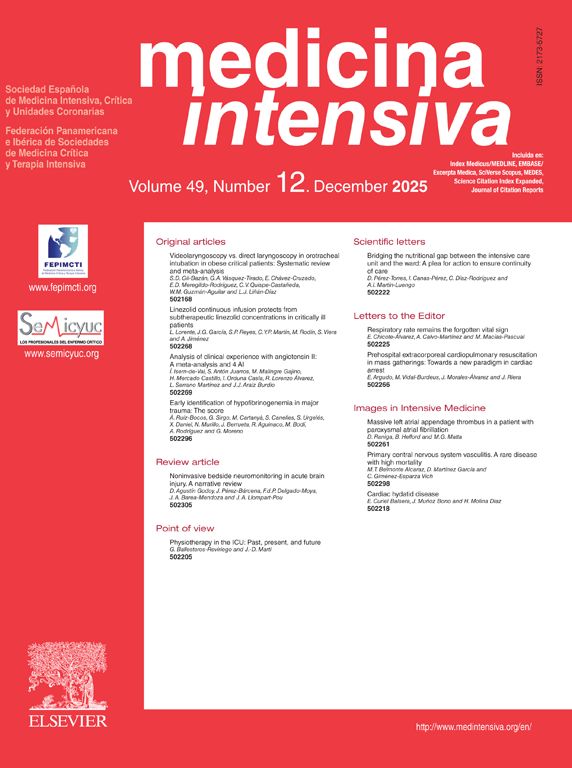We have read with enthusiasm the recently published case series where the authors evaluated the dynamic changes in inspiratory effort at the beginning and end of a spontaneous breathing trial, comparing the use of high-flow therapy and conventional oxygen therapy in tracheostomized patients, without finding statistically significant differences between both therapies.1 Of interest in daily clinical practice, we would like to highlight and share with the authors some points and questions that we believe are relevant.
Previous studies have shown that at the time of the first spontaneous breathing trial (SBT), 63% of patients may suffer from diaphragmatic dysfunction, 34% may show limb muscle weakness and over 20% may also suffer from both clinical scenarios.2 The reported case series shows a median of Medical Research Council score (MRC) of 41 (interquartile range, IQR 37–58), while the median mechanical ventilation duration was 17 days (IQR 12–25) and the median age was 70 (IQR 64–75). Do you think these variables could negatively influence the results by including patients with and without peripheral muscle weakness (cutoff point to diagnose muscle weakness is 48) and with such disparate mechanical ventilation times as 12 days and 25 days?
On the other hand, Li and colleagues showed that optimization of the effects of high-flow therapy was observed with flow rates between 1.34 and 1.67 times the peak inspiratory tidal flow,3 and in the case series only a flow of 60 L/min was used. Considering that the reported patients used pressure support ventilation before disconnection (the authors could quantify the peak inspiratory tidal flow), is it possible that some patients did not receive the necessary flow rate to optimize the benefits of the therapy? Although Li and colleagues' study was not conducted in tracheostomized patients, the analysis of the results showed a reduction in effects if the flow rate was above or below the described range. Since, to our knowledge, to date no similar study has been reported in patients with tracheostomy, we think that the results of Li and colleagues could be used in these cases. Moreover, this cohort of patients were in their first attempt of SBT when receiving high-flow therapy, but there is evidence of benefits in patients with prolonged mechanical ventilation.4
Finally, the authors state that they did not consider the evaluation of arterial blood gases, so we are unaware of the carbon dioxide partial pressure at the time of evaluation. Different reports show that high-flow therapy reduces respiratory rate, without producing major changes in CO2 concentration,4,5 so it would be reasonable to assume that this therapy reduces respiratory work. Is it possible that in this cohort there were no significant changes in respiratory rate (not reported by the authors), because of an inadequate flow rate, which directly impacts diaphragmatic function and modifies the results?
We would like to thank the authors in advance for the opportunity to debate and exchange different points of view on a topic of interest to us and one that we believe still has a long way to go.
Conflict of interestsNone.





